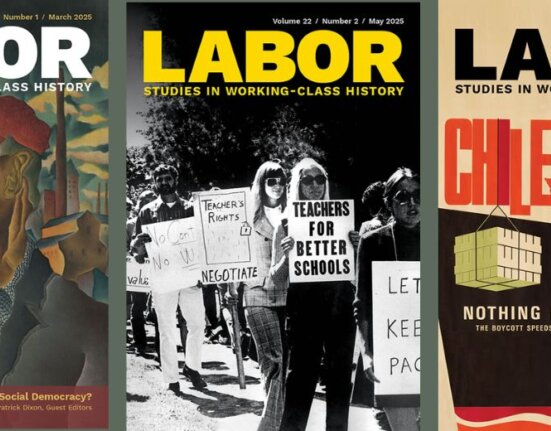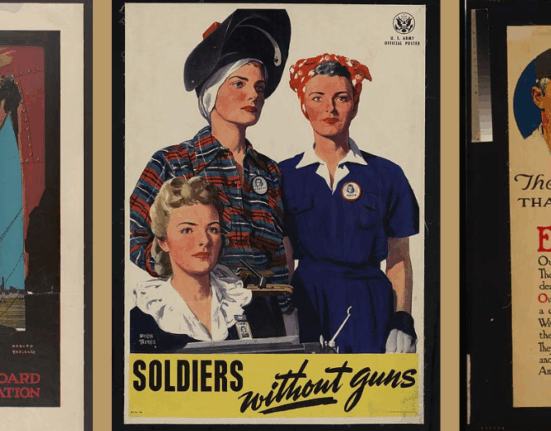In This Issue
The Common Verse
- William Boggs, “It’s Them Robots“
LAWCHA Watch
- Shelton Stromquist, “Going Global“
Arts and Media
- Joshua Brown, “Introduction to TV’s The Wire”
Joshua Brown introduces a critical retrospective on creator David Simon’s five-season (2002–8) HBO series, The Wire, with its riveting portrayal of blue-collar life in postindustrial Baltimore. In this section, Arts and Media, four scholars place the drama within its larger sociohistorical context. Focusing on season 2’s depiction of the city’s conflict-ridden waterfront in an era of globalization, Peter Cole extols the show’s treatment of race, class, and union themes as embedded in a compelling narrative with believable characters. Jennifer Luff worries that in plumbing the depths of institutional urban decay and depravity—and thus lumping together the transgressions of schools, cops, politicians, and media types alongside bankers, drug dealers, and long-shoremen—The Wire may end up substituting moral revulsion for a more penetrating political analysis of the city’s fate. Similarly, Thomas Jessen Adams believes that Simon, in his juxtaposition of a once-buoyant “producerist” blue-collar world since dragged down by deindustrialization, inadvertently risks projecting a gender-based nostalgia of once-happy times. In a final comment, Jennifer Klein extends the gender theme with an emphasis on the changing role of women (unevenly captured in the series) within global capitalism.
- Peter Cole, “No Jobs on the Waterfront: Labor, Race, and the End of the Industrial City“
- Jennifer Luff, “Featherbedding, Fabricating, and the Failure of Authority on The Wire“
- Thomas Jessen Adams, “Gender, The Wire, and the Limits of the Producerist Critique of Modern Political Economy“
- Jennifer Klein, “Comment: “Way Down in the Hole”“
Whither Labor History?
- Eric Arnesen, “Introduction: David Montgomery and the Shaping of the New Labor History”
This issue’s Whither Labor History? section looks at the influence of historian David Montgomery on the field of labor history. Eric Arnesen assembles a range of leading lights among our numbers—David Brody, James Green, Julie Greene, Jennifer Klein, and Nelson Lichtenstein—to comment on various aspects of Montgomery’s legacy of inquiries into the history of worker responses to capitalist power—with special attention to work process, politics, law, race, and empire, which will surely inspire re-readings for years to come.
- James Green, “David Montgomery, Scholar“
- David Brody, “David Montgomery, Field Builder“
- Julie Greene, “The Global Montgomery: Assessing the Place of the World in David Montgomery’s Historical Writing“
- Nelson Lichtenstein, “David Montgomery and the Idea of “Workers’ Control”“
- Jennifer Klein, “Class Power, Democracy, and the Market: Reflections on David Montgomery“
Articles
- Charles Delgadillo, ““The Balance Wheel”: William Allen White, the Kansas Industrial Court, and the Progressive Approach to the Labor Question, 1914–1925”
In this article, Charles Delgadillo addresses the fate of the Progressive approach to the labor question, which sought to eliminate socially costly industrial strikes through quasi-judicial measures that envisioned government as a neutral adjudicator between warring labor and capital. The Kansas Industrial Relations Act of 1920 epitomized this strategy by replacing strikes and lockouts with a system of compulsory adjudication called the industrial court. William Allen White, the celebrated Kansas newspaper editor, played a key role in advancing the industrial court as a civilized substitute for industrial warfare that was especially fair to labor. The Great Railroad Strike of 1922 dispelled White’s Progressive illusions after the law was used to break the strike by crushing civil liberties. White finally understood the working class’s wariness toward the state, and he realized that strikes were labor’s only means of obtaining justice. The failure of the Kansas Industrial Court freed Progressives such as White to accept the necessity of conflict in resolving industrial disputes, which formed the basis of New Deal labor policy.
- Tobias Higbie, “Why Do Robots Rebel? The Labor History of a Cultural Icon”
In his sustained treatment of the Czech author Karel Čapek’s masterwork, R.U.R., Toby Higbie suggests the ways that the playwright’s imagery (repeated in subsequent science fiction) of “robots” drew on contemporary fears and foreboding about industrial work. For one, the image of machine-made men bore a close resemblance to the bureaucratic transformation of factory floors under the regime of Taylorism. However, Higbie asks, “Could democracy survive with robot-like citizens? What kind of politics would come from people so dominated by the machine process?” After tracking the robot image from the 1920s through the dystopias of the Great Depression, Higbie discusses the similarities and discontinuities of imaginative robotic forms within the cyber-fiction of the twenty-first century.
Review Essay
- Eric Arnesen, “Ambiguous Legacies: Michael Kazin’s American Dreamers: How the Left Changed a Nation“






